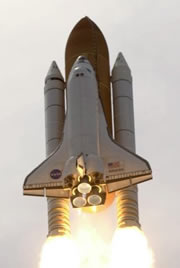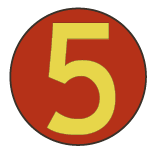What Is Ookaboo?

Ookaboo is a collection of images that are indexed by terms from the semantic web, or, the web of linked data. Ookaboo provides both a human interface and a semantic API. Ookaboo has two goals: (i) to dramatically improve the state of the art in image search for both humans and machines, and (ii) to construct a knowledge base about the world that people live in that can be used to help information systems better understand us.
Semantic Web, Linked Data
In the semantic web, we replace the imprecise words that we use everyday with precise terms defined by URLs. This is linked data because it creates a universal shared vocabulary.
For an example, in conventional image search, a person might use the word “jaguar” to search for
- the animal
- the automobile brand
- the Jacksonville Jaguars (NFL team)
- the game console from Atari
- … and nearly 30 other things that are listed in Wikipedia.
Note in the cases above, there are pages in Wikipedia about each of the topics above: it’s reasonable, therefore, that we could use these URLs as a shared vocabulary for referring to these things. However, we get some benefits when we use URLs that are linked to machine-readable pages, such as
http://dbpedia.org/resource/Jaguar, or http://rdf.freebase.com/rdf/biology.itis.180593
Pages on Ookaboo are marked up with RDFa, a standard that lets semantic web tools extract machine readable information from the same pages that people view.
Named entities
Ookaboo is oriented around named entities, particularly ‘concrete’ things such as places, people and creative works. With current technology, it’s more practical to create a taxonomy of things like “Manhattan”, “Isaac Asimov” and “The Catcher In the Rye” than it is to tackle topics like “eating”, “digestion” and “love”. We believe that a comprehensive exploration of named entities will open pathways to an understanding of other terms, and hope to extend Ookaboo’s capabilities as technology advances.
Ookaboo semantic API
The Ookaboo semantic API is a simple mechanism to query Ookaboo for photographs about named entities defined by URLs. Based on JSON, it makes it easy for automated systems to find photographs about topics. You can get started in a few minutes by reading the documentation and creating and API Key.
Creative Commons
All images in Ookaboo are either public domain or under Creative Commons licenses. As does Wikimedia Commons, we exclude images with a “noncommercial” clause, but unlike Wikimedia, we refuse non-free images with a claim of “fair use” and we permit images that contain a “nonderivative” clause.
Visitors to Ookaboo and users of the API are invited to use images they find in a manner consistent with their licensing. We believe that a link to the picture metadata page on Ookaboo (example here) for an image satisfies the “BY” requirement in creative commons, because our pages trace the provenance of images, however, we advise you to contact the creator of an image if you have any questions — for instance, the creator of an image can grant you the right to use an image under terms different than the creative commons license.
Geospatial Reasoning
Ookaboo is initially focused on things that are located in space: things like countries, cities, administrative divisions, monuments, buildings and bridges. This part of the Ontology2 strategy of exploiting “unreasonably effective” strategies for organizing information. As Ookaboo evolves, expect to see spatial knowledge reflected in both the U.I. and API.
Paul Houle on August 20th 2010 in Asynchronous Communications
![[Generation Five]](/q/wp-content/themes/mach-go/images/GenerationFive.png)
![[Reliable And Maintainable Software For The Next Generation]](/q/wp-content/themes/mach-go/images/ReliableAndMaintainableSoftwareForTheNextGeneration.png)

